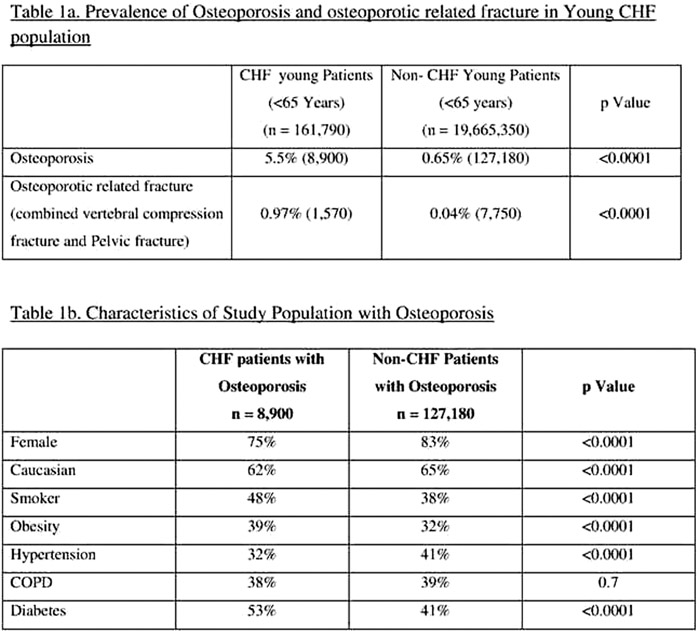Background:
Congestive Heart failure (CHF) is a contributor/risk factor for osteoporosis. The hypothesis is that due to renal insufficiency there is an activation of the renin‐angiotensin‐aldosterone system, increased parathyroid hormone levels, and hence decreased bone mineral density due to reabsorption. This is particularly marked in the elderly population. Till date there have been no studies looking at the prevalence of osteoporosis and rates of osteoporotic related factures in CHF, particularly in young adult (<65 years). Our aim was to evaluate the prevalence of osteoporosis and osteoporotic related fracture in younger patients (<65 years) who suffer from CHF.
Methods:
Electronic‐health‐records (Jan 1999 to Sept 2013) from 13 different healthcare systems were obtained utilizing a HIPAA‐compliant, patient de‐identified web application (Explorys: Explorys Inc). Utilizing ICD‐9 codes for diagnosis of the disorders. 19.8 million adults between the age group 18 — 65 years were identified, of which 161,790 were found to have CHF. Remaining 19,665,350 without HF formed our control group. The demographics and comorbidities were abstracted for comparison.
Results:
There was significantly higher prevalence of osteoporosis among HF patients compared to controls without HF [5.5% vs. 0.65% (p<0.0001)] with an odds ratio of 8.9 (95% CI 8.7 to 9.2). Osteoporotic related fractures were significantly higher among patients with CHF (0.97 % vs. 0.04 %, p <0.0001, OR 24.8 (95% CI 23.5 to 26.3). Detailed characteristics are as shown in table 1.
Conclusions:
There was a significantly higher prevalence (nine fold higher) of osteoporosis and osteoporotic related fractures in patients with CHF. Our study suggests that CHF may be a risk factor in not only the elderly population, but all in younger population who are less than 65 years of age. This study highlights the importance of risk stratifying CHF patients for early recognition and treatment of osteoporosis, which would reduce the risk of osteoporotic fracture. This will inturn reduce the mortality and morbidity of these groups of patient.

